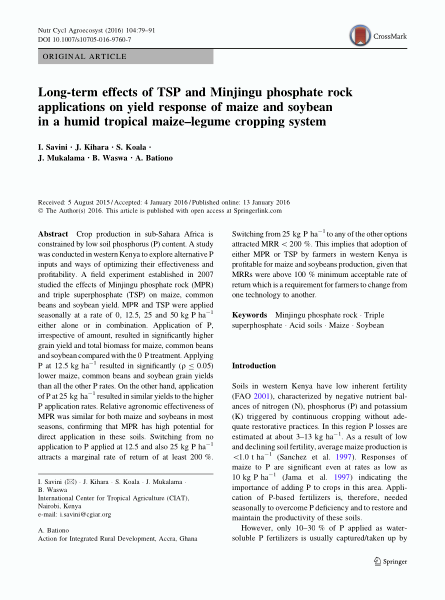Long-term effects of TSP and Minjingu phosphate rock applications on yield response of maize and soybean in a humid tropical maize–legume cropping system
Crop production in sub-Sahara Africa is constrained by low soil phosphorus (P) content. A study was conducted in western Kenya to explore alternative P inputs and ways of optimizing their effectiveness and profitability. A field experiment established in 2007 studied the effects of Minjingu phosphate rock (MPR) and triple superphosphate (TSP) on maize, common beans and soybean yield. MPR and TSP were applied seasonally at a rate of 0, 12.5, 25 and 50 kg P ha-1 either alone or in combination. Application of P, irrespective of amount, resulted in significantly higher grain yield and total biomass for maize, common beans and soybean compared with the 0 P treatment. Applying P at 12.5 kg ha-1 resulted in significantly (q B 0.05) lower maize, common beans and soybean grain yields than all the other P rates. On the other hand, application ofPat25 kg ha-1 resulted in similar yields to the higher P application rates. Relative agronomic effectiveness of MPR was similar for both maize and soybeans in most seasons, confirming that MPR has high potential for direct application in these soils. Switching from no application to P applied at 12.5 and also 25 kg P ha-1 attracts a marginal rate of return of at least 200 %. Switching from 25 kg P ha-1 to any of the other options attracted MRR\200 %. This implies that adoption of either MPR or TSP by farmers in western Kenya is profitable for maize and soybeans production, given that MRRs were above 100 % minimum acceptable rate of return which is a requirement for farmers to change from one technology to another.

